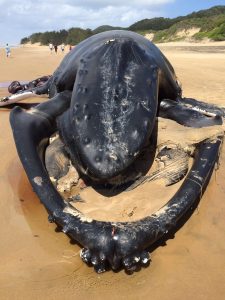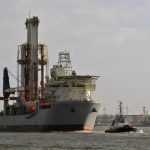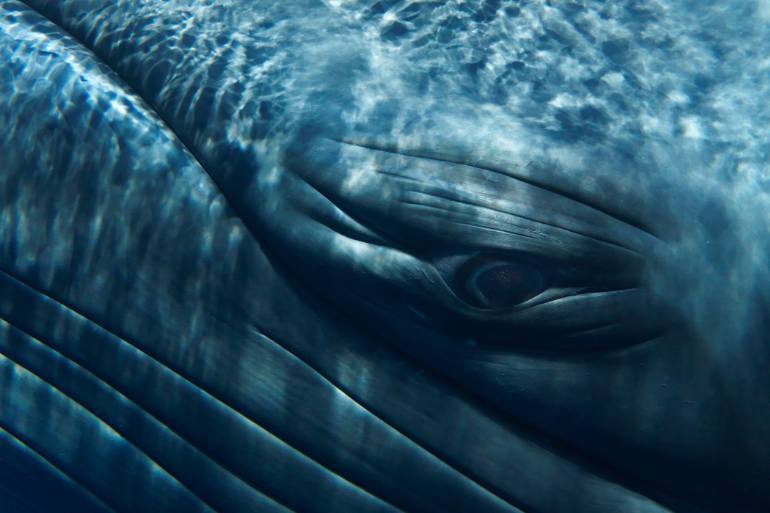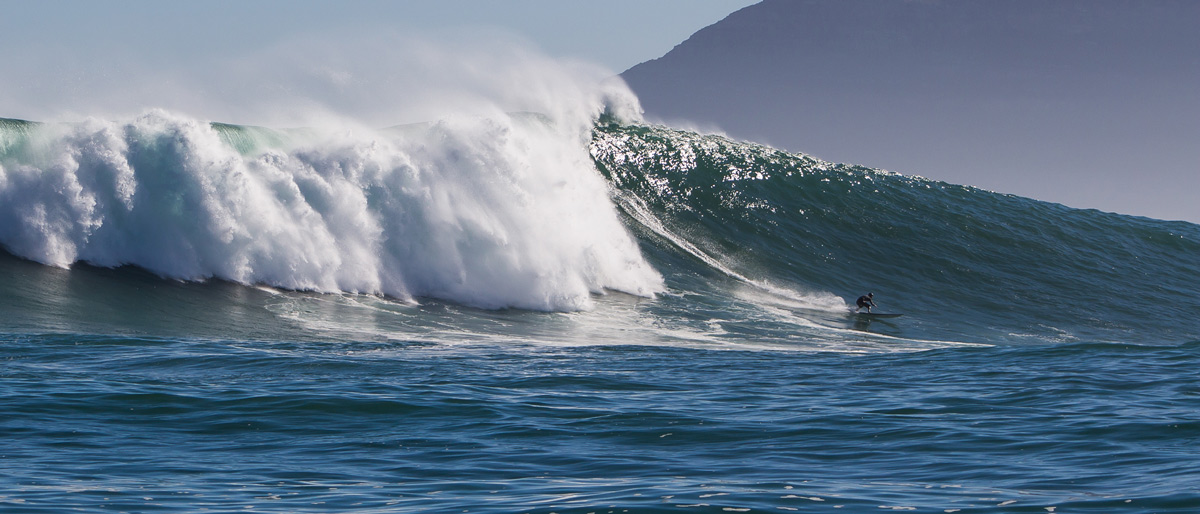Has loud underwater noise from the oil and gas exploration industry caused whale and dolphin deaths along the KwaZulu-Natal coast?
Senior Ezemvelo KZN Wildlife marine ecologist Dr Jennifer Olbers posed this question in a presentation about the death of at least 18 whales and dolphins that washed up on KwaZulu-Natal beaches last year. Tony Carnie reports
Amid ongoing deep-sea gas and oil exploration ventures, increased whale and dolphin strandings have been reported.
These explorations form part of the South African government’s Operation Phakisa (hurry up) initiative to unlock the economic potential of the ocean.
Sonar
Last year, a Roving Reporter investigation established that seismic surveys which use active sonar (Sound Navigation and Ranging) had continued well into last year’s whale migration period. This earned the wrath of leading marine scientists who accused the petroleum industry of reneging on an agreement made through Operation Phakisa that seismic surveys would not occur during the period June to November.
The highest number of whale strandings were subsequently recorded on the KZN coast last year.
Olbers said she was not unduly concerned after two whales after washed up at Mtunzini last July, since a number of whales died of natural causes every year. However, by October another 13 carcasses had washed up, and by year end the death toll reached 18 (10 whales and 8 dolphins) – the highest number of deaths recorded in a single year by Ezemvelo.
Whale carcasses
She said the verdict was still out on whether seismic surveys were the cause.
“There is just not enough data at the moment (to prove this),” she told the Symposium of Contemporary Conservation Practice in Howick on Wednesday.
To help resolve this, Olbers called for a detailed strategic environmental assessment of underwater seismic surveys, specifically focused on South African conditions.
She said research suggested that only 2% of dead whale and dolphin carcasses ever reached the shore, indicating that the true number of recorded deaths was massively under-reported,
Olbers noted that some of the dead whales and dolphins that died last year also had peculiar internal injuries indicated that they had risen to the surface at speed.
Noisy environment
A number of striped dolphins also had broken jaws, indicating that they were distressed and had slammed into something accidentally.
Olbers said that while the ocean was a naturally noisy environment because of wind, rain and underwater animal noise, average noise levels had risen by 10 – 12 decibels over the last 40 years due to a major increase in shipping, oil drilling, sonar exploration and other human-generated noise.
She noted that during seismic surveys by the oil and gas industry, air guns were blasted underwater every 10 – 15 seconds for 24 hours a day, producing noise levels of around 200 decibels.
Research in other parts of the world indicated that seismic noise could induce temporary or permanent hearing problems as well as tissue damage in some marine creatures.
In the Gulf of Mexico some whales stopped singing during seismic surveys, while sperm whales in other areas also showed unusual behaviour.
Ear damage
There was also evidence that the loud blasts from seismic surveys damaged the ears of some fish and shark species, while a dramatic 83% decline in tuna fish catches was recorded off the Namibian coast during a seismic survey.
Off the European coast, researchers had recorded major internal injuries in squid, while the ovaries of crabs were shown to be bruised due to seismic survey noise.
Earlier this year, new evidence emerged that large numbers of much smaller creatures such as larval krill were also killed within distances of 1.2km of seismic activity.
Eni scoping report
Last week, the Italian multi-national gas company, Eni, released an Offshore Drilling Scoping Report, revealing plans to start drilling for oil and gas reserves within a 1,840 km2 deep sea area stretching from Port Shepstone in the south to St Lucia in the north. The scoping report said seismic surveys would continue in tandem with the exploratory drilling.
Within 24 hours of receiving a detailed query from Roving Reporters about steps taken to address serious environmental impacts that drilling deep, huge wells into the sea bed can cause, the company postponed public engagement on the project and withdrew its report.
A statement issued by environmental consultants appointed by Eni said an updated scoping report will be released for public comment early next year.
To register as an interested and affected party email eni.offshore.eia@erm.com – Roving Reporters / Additional reporting, Fred Kockott

Also read
Deep sea gas exploration plan wavers
Report released, then withdrawn
Vast amounts of fossil fuel will be burned up in an extensive and potentially harmful deep-sea exploration for fossil fuels embedded deep in the earth’s crust not far off the KwaZulu-Natal shoreline. This is one of the ironies emerging from a provisional study of an OffShore Drilling Scoping Report recently released – then subsequently withdrawn – by Italian multinational gas and oil company Eni. Read more












